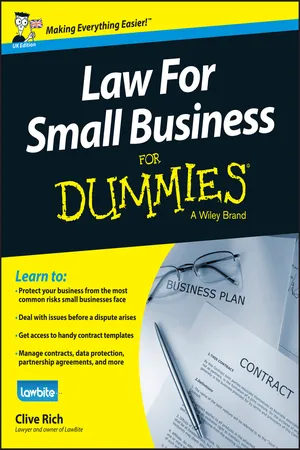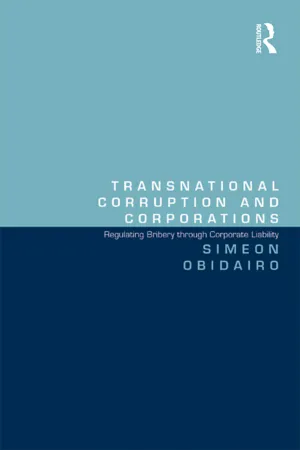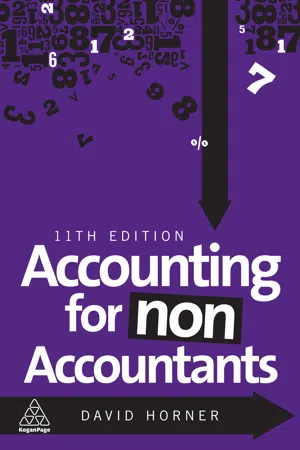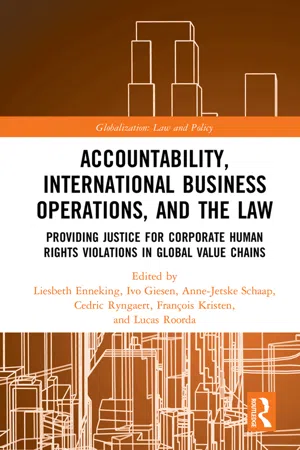Business
Limited Liability
Limited liability refers to the legal protection that limits an individual's financial liability to the amount they have invested in a business. This means that the personal assets of business owners are safeguarded in the event of business debts or legal actions. Limited liability is a key feature of corporations and limited liability companies, providing a level of security for business owners.
Written by Perlego with AI-assistance
Related key terms
12 Key excerpts on "Limited Liability"
- eBook - ePub
- Andreas Kokkinis(Author)
- 2017(Publication Date)
- Routledge(Publisher)
Limited Liability is a necessary condition for the emergence of portfolio diversification, as without it shareholders would be liable personally for companies’ debts in the case of insolvency and would thus have a strong incentive to invest in a small number of companies and take an active part in their management. From a UK legal doctrine perspective, Limited Liability means that the liability of a member of any registered company limited by shares, to contribute to the company’s assets in case the latter goes into insolvent liquidation, is limited to the amount unpaid 29 – if any – of the nominal value of the shares that the member has been allotted. 30 Practically the same rule applies to US corporations and to companies in other common law countries, as well as to certain company types with a minimum share capital in countries following the civilian legal tradition. 31 The history of the introduction of Limited Liability in the UK is interesting in its own right, 32 but it is even more intriguing with regard to the adoption of Limited Liability by banking firms, which followed a slightly different path from other companies. This largely reflects the early recognition of the special features of the banking sector that make Limited Liability a potential threat to the public interest, as will be explained in Chapter 3. Indeed, Limited Liability became available for companies by virtue of the Limited Liability Act 1855, while the possibility of incorporating and acquiring separate legal personality by registration was introduced by the Joint Stock Companies Act 1844 - eBook - ePub
- Tom Craig, David Campbell(Authors)
- 2012(Publication Date)
- Routledge(Publisher)
Clearly, for a business to grow in order to allow it to benefit from economies of scale and meet market demand, more investment would be needed than just a few people could provide. The problem was that investors would be reluctant to invest in business if they could be personally pursued for losses, especially if the investor did not intend to take an active role in managing the business. To answer these disincentives to invest, the idea of Limited Liability was developed. Limited Liability allows many people to invest in a business which is good for the business’s growth and development. If the business succeeds, the investors benefit from a share of the business’s profits (as a return on their investment). If, however, the business fails or incurs large losses, the investors will not be liable for anything other than the value of their initial investment. It is said that their liability is limited to the value of the money invested in the business. Of course, business failure means that shareholders lose this money investment, but they would not be pursued for money from their own personal wealth, as is the case in non-incorporated businesses. How Limited Liability Works Limited Liability, in its simplest sense, works as follows: The founders, on behalf of the entity of the company announce that it intends to carry out business activity and that investors are welcomed. The mechanism by which this happens varies from the informal (‘do you want to invest in my business idea?’) to the highly formal, such as the when a public company (see later in this chapter) publishes a ‘prospectus’. The value of the business (either its actual or its proposed value) is divided up into small ‘chunks’, typically of between 25 pennies and £1. Each of these ‘chunks’ is called a share. Individuals buy a number of shares in the business and in doing so, become shareholders. In exchange for the use of individuals’ investment, the agents (see below) of the company make certain commitments - eBook - ePub
- Frank H. Easterbrook, Daniel R. Fischel(Authors)
- 1996(Publication Date)
- Harvard University Press(Publisher)
2 Limited LiabilityLimited Liability is a distinguishing feature of corporate law—perhaps the distinguishing feature. Although partners are personally liable for the debts of the partnership, shareholders are not liable for the debts of the corporation. We have emphasized the contractual nature of corporate law, yet Limited Liability seems to be the antithesis of contract, a privilege bestowed on investors. In exchange for this boon, many argue, corporations should be required to submit to regulation, or do favors for customers and workers and neighbors.Not so fast. Limited Liability may be depicted as anticontractual only if it is inaccurately described. Corporations do not have “Limited Liability”; they must pay all of their debts, just as anyone else must (unless, in either event, they receive absolution in bankruptcy). To say that liability is “limited” means that the investors in the corporation are not liable for more than the amount they chip in. A person who pays $100 for stock risks that $100, but no more. A person who buys a bond for $100 or sells goods to a firm for $100 on credit risks $100, but no more. Managers and other workers are not vicariously liable for a firm’s deeds. No one risks more than he invests.Limitation of liability to the amount invested is an attribute of most investment, not just of corporate law. Debt investors in sole proprietorships, general or limited partnerships, business trusts, and other ventures possess Limited Liability. Suppose a bank lends $100 to a partnership, and the partnership’s liabilities later exceed its assets. The bank may lose the $100, but it will not be required to contribute any extra money. Its liability is limited to its investment, exactly as the shareholder’s liability is limited in a corporation. Employees and other contributors of human capital enjoy Limited Liability no matter the organizational form. Equity investors in publicly held corporations, limited partnerships, and business trusts need not contribute extra capital if the venture fails. The instances of “unlimited” liability are few. The general partners of a partnership may be required to contribute additional capital to satisfy the association’s debts. Even here, though, a discharge in bankruptcy enables the partner to limit his liability to a portion of the assets he possesses at the time the partnership requires more capital. (Some assets are exempt from attachment even in bankruptcy.) Limitations on liability turn out to be pervasive. - eBook - ePub
- Lawrence E Mitchell(Author)
- 2019(Publication Date)
- Routledge(Publisher)
8 Discharge of this task will occur after a more detailed articulation of the contradictions alleged above. Following the justification of the essay’s perspectives will be an explanation of why the apparent contradictions are in fact real ones and a proposal for reconciliation. This proposal relies on the proposition that limiting one’s own risks in the conduct of business does not require that those risks be shifted to unwilling—much less unwitting—third parties.The Rise and Fall and Rise and Rise of Limited Liability: The Official Story
The concept of Limited Liability typically contemplates a situation in which one making funds available to a business enterprise risks loss of those funds and no more.9 The corporate shareholder, the limited partner, the member of a Limited Liability company, and, of course, the non-equity creditor are the characters in modem business scenarios typically regarded as enjoying this attribute;10 in distinction are the general partner and the sole proprietor.Although the Limited Liability company is enjoying a surge of popularity,11 it is the corporation that has provided the most traditional method of limiting the liability of an enterprise’s equity participants.12 It thus is the law of corporations that tells most of the story of the American experience with the Limited Liability concept.13By all appearances, the founding fathers and their immediate successors had more pressing things on their minds than Limited Liability. Commentators refer to pre-nineteenth century American thought on Limited Liability (like that on indoor plumbing) as “almost nonexistent.14 ” Accordingly, the earliest corporate charters were mum on the subject of Limited Liability.15 Once it occurred to nineteenth century plaintiffs to pursue shareholders as well as corporations, however, judges noted the formally distinct juridical stature of the corporation and tended to conclude that corporate shareholders did indeed possess Limited Liability.16 - eBook - ePub
- Clive Rich(Author)
- 2016(Publication Date)
- For Dummies(Publisher)
veil of incorporation .Sounds very mysterious I know (after all, you don’t hear about the ‘cloak of isolation’ for sole traders or a sacred chalice from which partners in LLPs have to drink to seal the deal!). But veil of incorporation just means that any liability incurred by the company is limited to the company and doesn’t extend to its shareholders and directors.The shareholders of the company are in principle only liable to the extent of the nominal value of their shares. The nominal value is the face value of the share (say £0.01 or £1.00 each) as opposed to the actual market value of the share if it were sold (which would hopefully be much higher). So that’s why the principle is referred to as Limited Liability. If you have 50 shares worth £0.01, then all things being equal, your maximum liability for the company’s debts is £0.50, even if the whole shebang goes up in flames and loses millions of pounds. What a relief… .The concept of protection from liability provides one of the main motivations for forming a private Limited Liability company. This protection makes the Limited Liability company one of the most common types of trading structures for small and larger businesses.Advantages
The protection from personal liability means that limited companies are the safest of the three types of business structure I discuss in this chapter. Here are some of the advantages of establishing a limited company in more detail:- Distinct entity: A limited company is a discrete legal entity, completely separate from the people who run it. This arrangement provides security for company employees and members, because it exists beyond the life of its members. This setup is in stark contrast to the case of sole traders (read the earlier ‘Going it alone: Sole trader ’ section) and General Partnerships, where no such separation exists (other than for the newer LLPs; see the earlier section ‘Collaborating with a colleague: Partnership
- eBook - ePub
Transnational Corruption and Corporations
Regulating Bribery through Corporate Liability
- Simeon Obidairo(Author)
- 2016(Publication Date)
- Routledge(Publisher)
In the US, UK, and Germany, the principles applied in piercing the veil when individuals are the shareholders are directly extended to situations where a parent corporation owns or controls a subsidiary. The unfortunate effect of this automatic extension is that a corporation could avoid liability for the obligations of a subsidiary corporation. Allowing Limited Liability for corporations holding shares in another corporation allows the parent corporation to escape liability for transnational bribery. Should the doctrine of Limited Liability be discarded? From a policy perspective, the very compelling policy considerations justifying Limited Liability for individual shareholders lose their potency when applied to individual corporate shareholders. The doctrine was developed with the legitimate objective of protecting the many individual shareholders of a corporation from personal liability that they would be exposed to through the ownership of a few shares in a corporation. A consequence of allowing one corporation to hold shares in another corporation is that these corporations can exploit the protection of Limited Liability to shield the corporation from liability for transnational bribery.The implication of abolishing the protection of Limited Liability has been the focus of debate amongst scholars. Those arguing in favour of Limited Liability can be broadly divided into two camps. First, law and economics scholars argue that the concept of Limited Liability promotes efficiency in the relationship between corporate constituents. Second, historical advocates argue that Limited Liability allows people of lesser means access to risk taking ventures presented by corporations.Easterbrook & Fischel have articulated a comprehensive economic justification in support of maintaining Limited Liability.89 Easterbrook & Fischel offer five reasons for retaining the doctrine of Limited Liability based upon principles of economic efficiency.90 - eBook - ePub
- David Horner(Author)
- 2020(Publication Date)
- Kogan Page(Publisher)
14An introduction to limited companies
Introduction
As countries began to industrialize during the 18th and 19th centuries, business expansion was commonplace owing to increasing reliance on mechanized forms of production. This led to an increased need for capital in order to finance operations. Potential investors in these business ventures would have been reluctant to risk much of an investment because the owners of such enterprises faced unLimited Liability. This meant that owners of businesses would not only lose their original investment in the business but might also have to resort to selling off their own resources not used within the business to settle any outstanding debts that the business had incurred if it was unable to pay out of its own resources.UnLimited Liability still exists for businesses operating as both sole traders and partnerships. These business organizations may bear the risk of unLimited Liability but they are normally small-scale operations that have not acquired significant levels of debt. As small-scale ventures, the need to attract external investment is not as pressing an issue. Even with partnerships, which are normally larger-scale organizations than sole traders, changes in regulation have allowed for the existence of a Limited Liability partnership, which means that this form of organization no longer has the risk of the owners of the business having to lose personal resources.Limited Liability
As the need for capital increased as the early industrial revolution progressed, it was recognized that to encourage investors to invest into business ventures, a change in the legal status of business organizations was needed. The introduction of the limited company as a new form of business organization allowed companies to raise capital from investors without the risk of the investors losing their own personal resources.A limited company is characterized by the owners of the company benefiting from Limited Liability. This means that the owners of the company can lose no more than their original investment into the company. This is because the company, once set up, exists in the eyes of the law as a separate legal entity - eBook - ePub
- David Horner(Author)
- 2017(Publication Date)
- Kogan Page(Publisher)
14An introduction to limited companies
Introduction
As countries began to industrialize during the 18th and 19th centuries, business ventures generally expanded in size owing to increasing reliance on mechanized forms of production. This led to an increased need for capital in order to finance these operations. Potential investors in these business ventures would have been reluctant to risk much of an investment because the owners of such enterprises faced unLimited Liability . This meant that owners of businesses would not only lose their original investment in the business but might also have to resort to selling off their own resources not used within the business in order to settle any outstanding debts that the business had incurred if it was unable to pay out of its own resources.UnLimited Liability still exists for business ventures for both sole traders and partnerships. These business organizations may bear the risk of unLimited Liability but they are normally small-scale operations that have not acquired significant levels of debt. As small-scale ventures, the need to attract external investment is not as pressing an issue. Even with partnerships, which are normally larger-scale organizations than sole traders, changes in regulation have allowed for the existence of a Limited Liability partnership, which means that this form of organization no longer has the risk of the owners of the business having to lose personal resources.Limited Liability
As the need for capital increased as the early industrial revolution progressed, it was recognized that to encourage investors to take risks by investing into business ventures, a change in the legal status of business organizations was needed. The introduction of the limited company - eBook - ePub
Accountability, International Business Operations and the Law
Providing Justice for Corporate Human Rights Violations in Global Value Chains
- Liesbeth Enneking, Ivo Giesen, Anne-Jetske Schaap, Cedric Ryngaert, Francois Kristen, Lucas Roorda, Liesbeth Enneking, Ivo Giesen, Anne-Jetske Schaap, Cedric Ryngaert, Francois Kristen, Lucas Roorda(Authors)
- 2019(Publication Date)
- Routledge(Publisher)
The chapter begins with a critical analysis of the historical development and theoretical foundation of the LL and SCP structure, followed by a consideration of some of the conceptual difficulties associated with the operation of these principles, focusing chiefly on the schizophrenic nature of the corporation as both a commodity and a social entity. I then turn to some of the practical implications of these theoretical problems, particularly the manner in which the LL and SCP structure can frustrate the pursuit of legal accountability for harm caused by dangerous activities associated with MNEs and thereby operate as a barrier to justice. I conclude with a discussion of the potential for reform of this area, including an examination of some existing proposals and the extent to which they address the conceptual and practical obstacles identified in the preceding sections of the chapter. Having considered these alternatives, the adoption of a profit risk/created risk liability regime is discussed. This proposal represents a shift away from the predominant control-based approach to one that instead focuses on the interface between profit and risk creation.11.2 Limited Liability and separate corporate personality: theoretical foundations and historical development
11.2.1 The principles
The principle of LL, by which shareholders’ liability for a company’s debts is limited to the amount they have paid, or have agreed to pay, to the company for its shares,1 is a relatively recent invention in the context of the historical development of business organizations. Prior to the passage of the English Companies’ Acts of 1844–62, the predominant form of business organization was the partnership, in which small groups of individuals “clubbed together” resources in pursuit of a business objective.There is broad consensus that the professed policy reason behind the legalization of LL companies in England was to facilitate investment in business enterprises. This was to be achieved by shielding those who gave financial backing to the venture from potential personal ruin if the business failed. This externalization of risk and consequent permissive environment for investors was considered by English legislators to be a necessary catalyst for the capital-intensive projects that ultimately drove forward the industrial revolution, and has since been termed an “economic necessity”, without which “full economic development was impossible”.2 - eBook - ePub
A Social History of Company Law
Great Britain and the Australian Colonies 1854–1920
- Rob McQueen(Author)
- 2016(Publication Date)
- Routledge(Publisher)
Chapter 4The Reasons for the Enactment of, and the Form Taken by, English Limited Liability Legislation, 1855–1856
Introduction
It has become almost a commonplace to associate large accumulations of capital with a specific legal form – the Limited Liability company. Corporate law appears to have been tailored to suit the particular needs of large-scale capitalist enterprise. The limited company has achieved such dominance as the characteristic unit of capitalist organization that alternative methods of organization are difficult to imagine. It is not surprising, therefore, to find in many studies of the development of capitalism in England the assertion that modern company law is a legacy of the organizational and economic requirements of English capital in the middle years of the nineteenth century. One such study proposed the following historical explanation for the arrival of the Limited Liability system of incorporation in England:The law seemed to ‘lag behind’ commercial developments, merely being revised when a spate of frauds highlighted inadequacies in the existing legislation. Although the State was initially able to exploit its power to grant Charters, economic forces eventually compelled it to concede to business an unconditional right to incorporate, and the State confined its role to safeguarding the mechanisms for corporate self-regulation. Thus the State finally tailored its laws to the interests of private capital1 .A number of researchers have challenged such teleological accounts of the historical development of company law2 . They have pointed to the absence of any evidence suggesting a campaign on the part of business interests to have Limited Liability incorporation adopted. Indeed the evidence which does exist points to an antagonism on the part of those involved in the key sectors of the English economy in the mid nineteenth century to any such legislation. Many of the ‘ captains of industry’ viewed the introduction of such legislation with considerable hostility, and sought to characterize it as a dangerous, if not capricious, development. Whilst acknowledging that there might be a need for such legislative devices in circumstances where there was a want of capital for industrial undertakings (for example, in France), in England such logic could not prevail, as ‘under the existing system no insurmountable obstacle had hitherto presented itself to the employment of capital in any undertaking of public utility’3 . In fact, the opposition to the measure was so great amongst existing capitalists that many Chambers of Commerce in the key industrial regions presented petitions against the measure in 1856, amongst these being the Birmingham, Manchester, Liverpool and Glasgow Chambers of Commerce4 - eBook - ePub
- David Chandler(Author)
- 2020(Publication Date)
- Routledge(Publisher)
33Corporations are universally treated by the legal system as “legal persons” that exist separately and independently of their directors, officers, shareholders, or other human persons with whom the legal entity interacts. … shareholders do not own corporations; nor do they own the assets of corporations.34Contrary to popular myth, as well as widespread belief among executives and directors,35 therefore, shareholders do not own the corporation.36 Instead, they own a type of security (a legal contract) that is commonly referred to as stock. The rights associated with this stock are highly limited; in reality, the value of a share lies largely in its re-sale price, achieved via a transaction on a stock exchange based on third-party perceptions of the firm’s future performance potential. As acknowledged, even by shareholder advocates:Today … there seems to be substantial agreement among legal scholars and others in the academy that shareholders do not own corporations.37The business judgment ruleThis challenge to the idea of shareholders as the legal owners of the firm is gradually becoming established. This process is aided by a compelling argument that there is weak legal precedent, in the U.S. or elsewhere,38 for the idea that managers and directors have a fiduciary responsibility to place shareholder interests over the interests of other stakeholders:39Contrary to widespread belief, corporate directors generally are not under a legal obligation to maximise profits for their shareholders. This is reflected in the acceptance in nearly all jurisdictions of some version of the business judgment rule, under which disinterested and informed directors have the discretion to act in what they believe to be in the best long term interests of the company as a separate entity, even if this does not entail seeking to maximise short-term shareholder value. Where directors pursue the latter goal, it is usually a product not of legal obligation, but of the pressures imposed on them by financial markets, activist shareholders, the threat of a hostile takeover and/or stock-based compensation schemes.40 - eBook - ePub
Equity Capital
From Ancient Partnerships to Modern Exchange Traded Funds
- Geoffrey Poitras(Author)
- 2016(Publication Date)
- Routledge(Publisher)
The unresolved issues in this act led Robert Slaney, chairman of the Commons Select Committee on the Law of Partnership, to propose a Royal Commission—the Mercantile Laws Commission (1854)—which led to an amendment to the Act of 1844—the Limited Liability Act (1855)—granting Limited Liability with general registration. Companies could elect to retain unLimited Liability, a practice that continued in the banking industry until the collapse of the Glasgow Bank. It is significant that Slaney, “a persistent campaigner for … working-class enterprise” (Bryer 1997, p.40) and “a reformer with mild radical views” (Saville 1956, p.419), was on the side arguing for general Limited Liability. At the time, conventional working-class wisdom saw Limited Liability as a benefit to the wealthy. As a class, the wealthy saw the move to general registration and Limited Liability as encroachment on old corruption and the perpetuation of privileged status. In addition, there was the generally held perception that “there was no way of preventing fraud unless, ‘the man with the money should be responsible for the character of the business’” (Bryer 1997, p.41). In the US, the situation was different. In the early years of the republic, “the great majority of projects were launched without charters; they apparently did not regard unLimited Liability as a serious business handicap” (Livermore 1935, p.676). 12 Corporations initially appeared in “spheres that were at first thought to involve relatively little risk. They emerged not in land speculation or in trade where failure was likely, but primarily in fields where success seemed almost certain. And the disappointed took for granted the assistance of generous governments which came to their aid with lotteries, grants of land, and increased tolls when profits slackened” (Handlin and Handlin 1945, p.16). The English common-law connection of corporate status and Limited Liability was less binding in America
Index pages curate the most relevant extracts from our library of academic textbooks. They’ve been created using an in-house natural language model (NLM), each adding context and meaning to key research topics.











